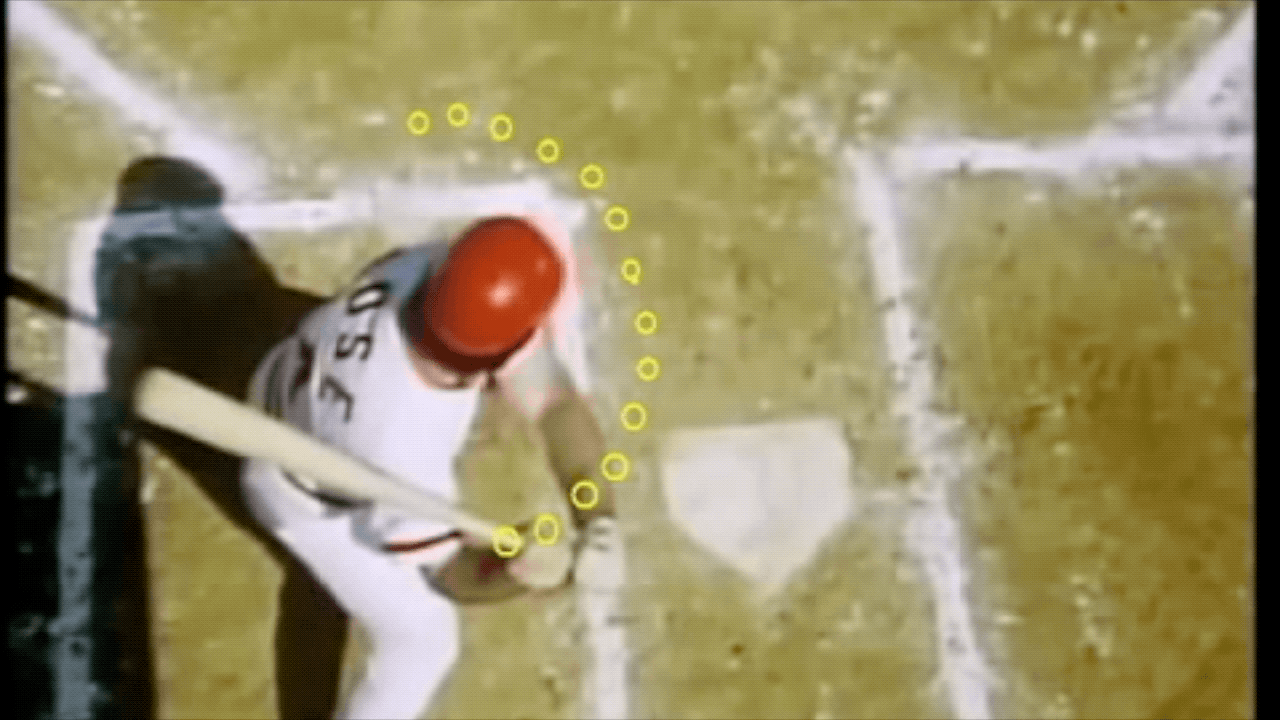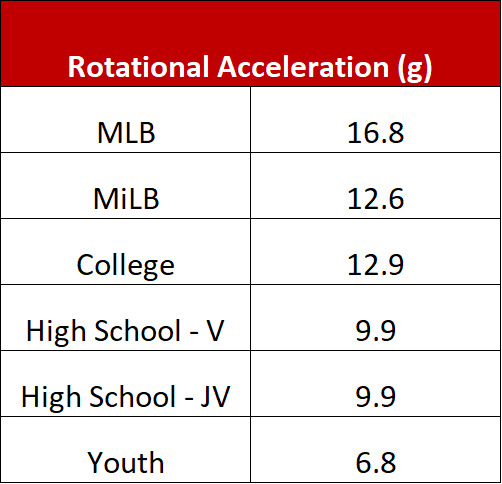
Today, we’re going to focus on how we look to improve the Blast Motion Rotational Acceleration metric in a baseball player. Rotational Acceleration measures how quickly the bat accelerates into the zone, from first move to getting on plane. A high Rotational Acceleration helps players create power at contact, provide for maximum time to react to an incoming pitch and overall hitting adjustability.
Let’s quickly review the metric. Rotational Acceleration as defined by Blast Motion is measured during when the bat transitions from the load into the rotation. It’s actually a lot earlier than what most people think. Here is a video from Blast Motion that depicts when it’s measured.

Also as a reference, here are minimum suggested rotational acceleration figures by level as suggested by Blast from their national database.

While there are many variables that contribute to better rotational acceleration, in this article we’ll look at the Big 3 we often see with athletes we have observed in our facility:
-
- Lower Body Stability / Mobility
- Maintain Scapular Strength / Mobility
- Anterior Core Strength / Lateral Stability
1. Lower Body Stability / Mobility
The swing, much like pitching, is generated from the “ground up”. So, as a result, just about all speed/power issues that shake free in upper body metrics are usually related to a disconnect in the lower half, especially in younger athletes who usually haven’t developed an adequate base of strength.
Mechanics: This lack of lower body strength can show up on video with an unstable base at foot plant or poor lead leg blocking due to a loss of posture during the linear move or the ability to co-contract the hip. This will make it hard for these athletes to not only load the back hip/glute, but keep it loaded all the way through the linear move and into the beginning of rotation. This lower half leak compromises posture as well as weight distribution at heel plant preventing a good stable base to transfer force up through the upper half and into the bat to achieve maximum rotational acceleration. Training lower body strength and stability in all planes of motion is key.
(Lateral KB Lunge)
(SLDL)
2. Maintain Scapular Strength / Mobility
Adequate counter-rotation during the linear move allows the upper half to lag behind the lower body, increasing more force or kinetic energy through increasing the elastic load on the trunk. Creating a good scap load plays a big part in helping to create this tension (torque) with the upper half in the opposite direction of the force being created with the lower body, much like wringing out a wash rag. For this getting in some good Shoulder mobility Stability and T-spine mobility work can reap huge benefits.

Mechanics: it’s important not to confuse torso rotation with a scap load. Remember the scap is bringing the arm back NOT the trunk. When analyzing video, wrapping the bat can be a dead giveaway that the torso may be counter-rotating too much. That’s why strengthening ext. rotation as well as scap stability can be a game changer.
(Alligator Walks)
(T-Spine Circuit)
It’s important to note that we not only need to be able to load the scap but maintain that load in order to keep slack out of the body as the lower body power is transferred through the core. This brings us to point number 3.
3. Anterior Core Strength / Lateral Stability
Good anterior as well as lateral core strength/stability will allow for greater hip shoulder separation as well as the ability to hold that separation for later in the swing.
Mechanics: A strong core can help prevent the arm/shoulder from going early and losing energy transfer into the arm and ultimately into the bat, reducing rotational acceleration and bat speed. When analyzing video, inadequate space with the hands at foot plant is a dead giveaway that the abdominal sling is not being adequately stretched, thus creating too much slack and inefficient torque during hip / shoulder separation. Working the anterior core as well as the obliques can go a long way in not only creating rotation but holding it there until needed as well.
(Bird Dogs)
(Waiters Walks)
Summary
By connecting a strong and stable lower half to a great upper half, scap load via a strong core helps us keep slack out of the body. This can help create a tighter turn while maximizing Blast Motion’s rotational acceleration metric. The more efficient the hitter becomes at generating maximum rotational acceleration, the longer he can wait before initiating his swing and quicker he can deliver bat speed and increase overall power production at contact.
See ya’ in the gym…
By Nunzio Signore (BA, CSCS, CPT, NASM, FMS)
If you’d like to be added to our email list, please enter your information below!

